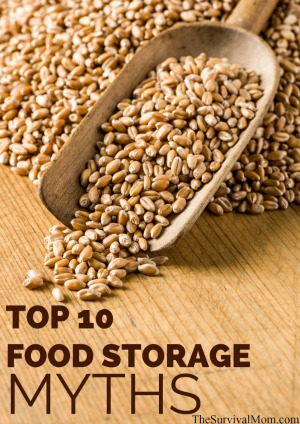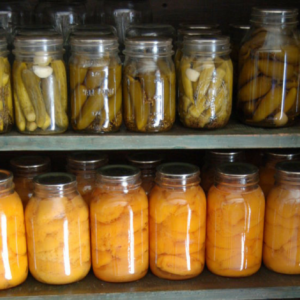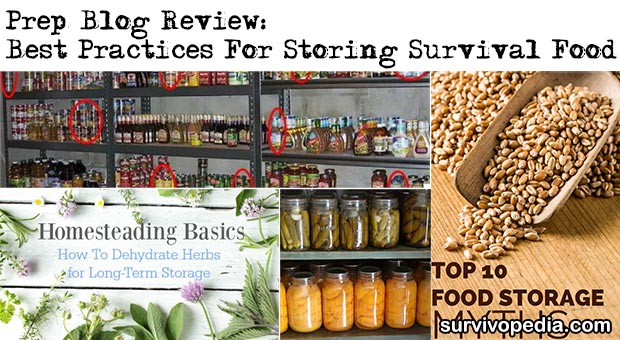Disasters can happen to anyone, anytime and hence you can’t prevent them, you can prepare for them. I want you to answer to one question: if disaster strikes tomorrow, do you have the basics covered? And when I say basics I mean food and water.
Water and food are at the top of the list when it comes to storing for survival if you want to have a healthy, ever-lasting, super-diversified diet when SHTF. But storing food for survival becomes overwhelming when you keep buying, and buying without a plan in mind.
That is why, for this week’s Prep Blog Review I’ve gathered 4 articles that sum up the best practices for storing survival food.
- Top 10 food Storage Myths

Myth #1: You should stock up on lots of wheat.
When I was researching foods typically eaten during the Great Depression, I noticed that many of them included sandwiches of every variety. So it makes sense to stock up on wheat, which, when ground, becomes flour, the main ingredient to every bread recipe.”
Read more on The Survival Mom.
- The Best ORAC Foods to Stockpile
“ORAC stands for ‘oxygen radical absorbance capacity.’ It is a unit of measure to determine the antioxidant capacity of a particular food. The higher the ORAC unit value, the more antioxidants a food will have.
Antioxidants neutralize free radicals and therefore play a role in overall long-term health. Of course, you may think: why should I care about my long-term health when SHTF? No, you probably shouldn’t. But, if you are like me, you’re probably rotating your food stockpile. So when your cans are about to expire… instead of throwing them away you can eat a healthy balanced meal.”
Read more on Ask A Prepper.
- 50 Food Items To Keep Stocked for Emergencies

Read more on The Well Prepared Mama.
- How To Dehydrate Herbs for Long-Term Storage
“Herbs are one of the first plants we put in our garden. There is nothing like fresh culinary herbs to intensify the flavors of food. As well, herbs are hardy garden plants that don’t have to be watered as much as vegetables and can serve more than one purpose by being used as natural medicine. For instance, did you know that a sage leaf can be used instead of a band-aid because it has natural healing qualities? Some of these popular culinary herbs are oregano, thyme and sage and can grow year-round in many parts of the country.”
Read more on Ready Nutrition.
This article has been written by Drew Stratton for Survivopedia.
2 total views, 1 views today
from Survivopedia
Don't forget to visit the store and pick up some gear at The COR Outfitters. How prepared are you for emergencies?
#SurvivalFirestarter #SurvivalBugOutBackpack #PrepperSurvivalPack #SHTFGear #SHTFBag




No comments:
Post a Comment